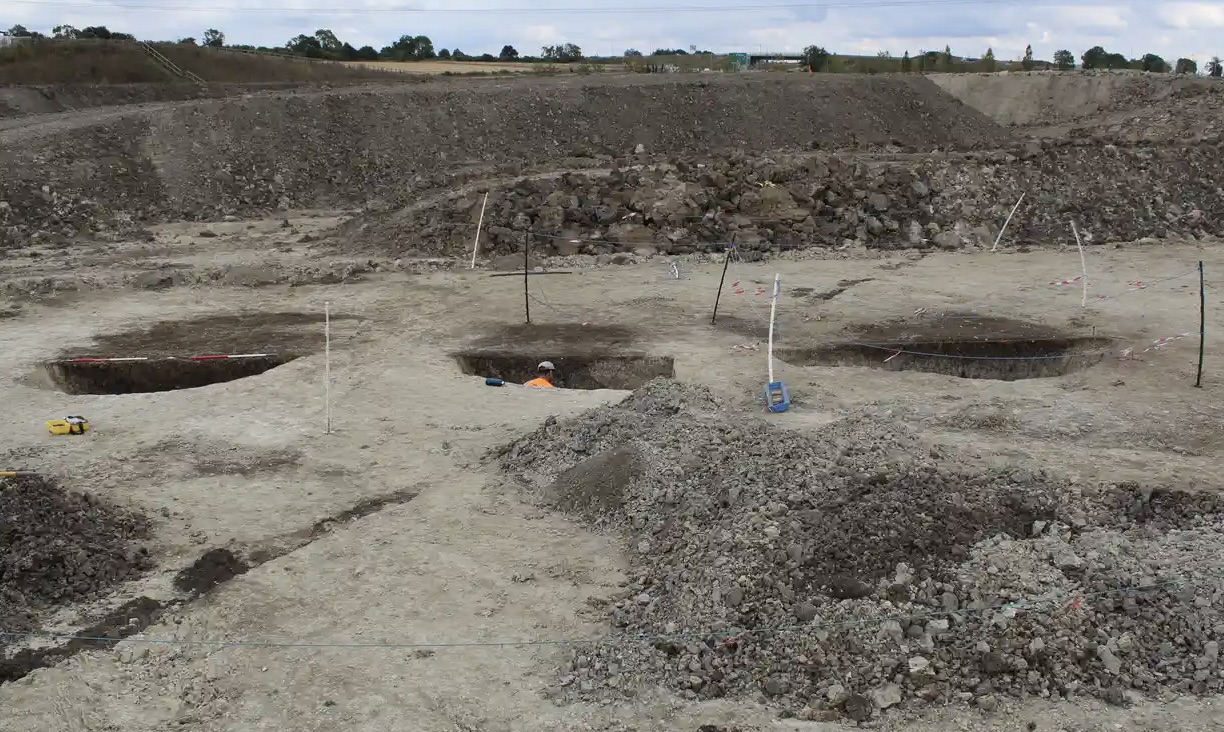Mystery Stone Age holes in England have archaeologists asking, 'What were these pits for?'
Archaeologists in England have found up to 25 large pits dotting the countryside, but their purpose remains a mystery.

Archaeologists in England have discovered more than two dozen monumental pits dotting the countryside in Bedfordshire, north of London.
Radiocarbon dating of materials retrieved from the prehistoric site revealed that the round, steep-sided holes were created around 7,700 to 8,500 years ago during the Mesolithic, also known as the Middle Stone Age, according to a statement from the Museum of London Archaeology, which made the finding alongside Albion Archaeology, a U.K.-based archaeological company.
The finding, dubbed the Linmere pits, includes up to 25 holes that measure up to 16 feet (5 meters) wide and 6 feet (1.9 m) deep and are laid out in straight lines up to 1,640 feet (500 m) long.
The discovery is "incredibly significant" because there are few substantial Mesolithic sites in the U.K. Most discoveries from this time include only flint tools and occasional butchered animal remains, making it difficult to understand the lives of the people who left these artifacts.
Related: Thousands of prehistoric pits discovered around Stonehenge
"While we know of other large and enigmatic pits dug by hunter-gatherers from elsewhere in Britain, including at Stonehenge, [the Linmere] pits are striking because of their number and the wide area they cover," Josh Pollard, an archaeologist and professor at the University of Southampton in England, said in the statement.
Because the holes appear to be strategically placed around what were once stream channels, researchers think the pits may have been spiritually significant and may have played a role in recording important celestial events, such as the solstices, although evidence is still needed to support this idea. Some of the pits contained animal remains, including bones from aurochs (Bos primigenius), an extinct species of cattle, and could have served as food storage, the researchers hypothesized. Similar pits were found near Stonehenge last year.

Stone Age people would have needed to adapt to a changing environment, the team added. In Mesolithic times (about 12,000 to 6,000 years ago), the U.K. became isolated from mainland Europe as ice sheets retreated and sea levels rose.
Get the world’s most fascinating discoveries delivered straight to your inbox.
The archaeologists are currently studying whether all of the pits were dug simultaneously and analyzing pollen found at the site, including remnants of oak, hazel and pine trees dating to the Mesolithic period.
"This work will reveal the environment these people lived in, and hopefully answer the question 'what were these pits for?'" Yvonne Wolframm-Murray, a project officer at the Museum of London Archaeology who was involved in the archaeological dig, said in the statement.
Jennifer Nalewicki is former Live Science staff writer and Salt Lake City-based journalist whose work has been featured in The New York Times, Smithsonian Magazine, Scientific American, Popular Mechanics and more. She covers several science topics from planet Earth to paleontology and archaeology to health and culture. Prior to freelancing, Jennifer held an Editor role at Time Inc. Jennifer has a bachelor's degree in Journalism from The University of Texas at Austin.


